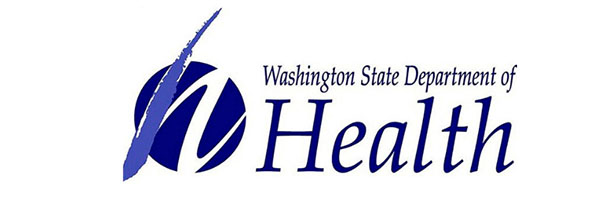||| FROM STATE DEPARTMENT OF HEALTH |||
OLYMPIA – The latest COVID-19 modeling and surveillance situation report from the Washington State Department of Health (DOH) shows disease activity is declining across the state. Immunity from vaccination is helping slow the spread of the virus and reduce its impact on the health care system. Vaccination efforts and other preventive measures (like wearing masks and maintaining distance if you’re unvaccinated) need to continue to keep trends from reversing.
Report findings include:
- Case counts are declining statewide and either declining or flattening in most counties. Only a few counties are continuing to see increasing case counts, including Lewis, Kittitas, Stevens and Whatcom.
- Transmission decreased sharply over the last two weeks of April, but was still relatively high as of April 30. The report includes two estimates of the reproductive number (Re), which tell us how many new people each COVID-19 case will infect. The behavior and variant-based Re reflects only the impact of people’s actions and variants that spread more easily, with a best estimate of 1.34 on April 30. The total Re includes these factors as well as the effects of immunity, with a best estimate of 0.88. To reduce case rates, the total Re needs to stay well below one for a substantial amount of time.
- Immunity from vaccination is playing an important role in reducing transmission. As of May 6, the best model-based estimate of overall population immunity was 36.5%. Estimated immunity from vaccination (about 23.6% of the population) was almost twice as high as immunity from prior infection (about 12.9% of the population). These estimates include the time it takes to develop immunity after completing vaccination.
- The estimated percentage of the population with active COVID-19 infections, known as overall prevalence, was decreasing but still high as of May 6. The report estimates the highest prevalence in the fourth wave was in late April. High prevalence means a lot of people may need health care or could be passing the virus to others.
- As of May 6, case rates were declining in most age groups and flattening in the rest. Cases were flattening among children ages 0-9 and adults 60-69 at that time, and remained flat in people age 70 and older. Case rates continued to be highest among people ages 20-29, followed by ages 10-19 and ages 30-39.
- Hospital admissions were declining slightly in people ages 20-79 as of May 6. More recent data reported by hospitals suggest total hospital admission rates are continuing to flatten or decline slightly as of mid-May. As of May 14, the number of hospital beds occupied by COVID-19 patients statewide is beginning to flatten. The number of ICU beds occupied by these patients has varied more, but also appears to be flattening.
- Getting vaccinated is protecting people from serious illness from COVID-19 that requires hospitalization and helping to control hospital admission rates. The hospital admission rate for COVID-19 in unvaccinated people ages 45-64 is about 18 times higher than people of the same age who are fully vaccinated. For people ages 65 and older, the hospital admission rate is about 11 times higher among people who are unvaccinated than those who are fully protected.
“We are excited to see trends improving, but we are not out of the woods yet,” said Acting State Health Officer Scott Lindquist, MD, MPH. “We still have work to do on vaccinations if we want to continue to see declines in disease and make progress toward full reopening. Getting vaccinated is the best way to protect yourself, your family and your community from the virus.”
DOH partners with the Institute for Disease Modeling, Fred Hutchinson Cancer Research Center, University of Washington and the Microsoft AI for Health program to develop these reports every other week. More COVID-19 data can be found on the DOH data dashboard.
The DOH website is your source for a healthy dose of information.
**If you are reading theOrcasonian for free, thank your fellow islanders. If you would like to support theOrcasonian CLICK HERE to set your modestly-priced, voluntary subscription. Otherwise, no worries; we’re happy to share with you.**








